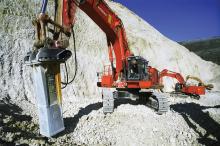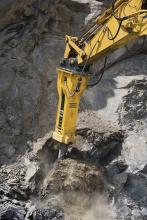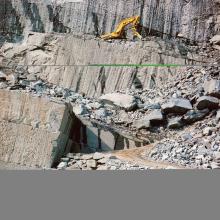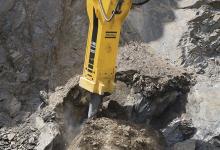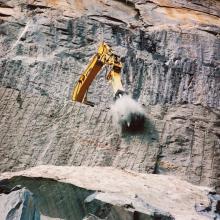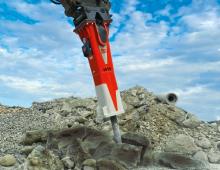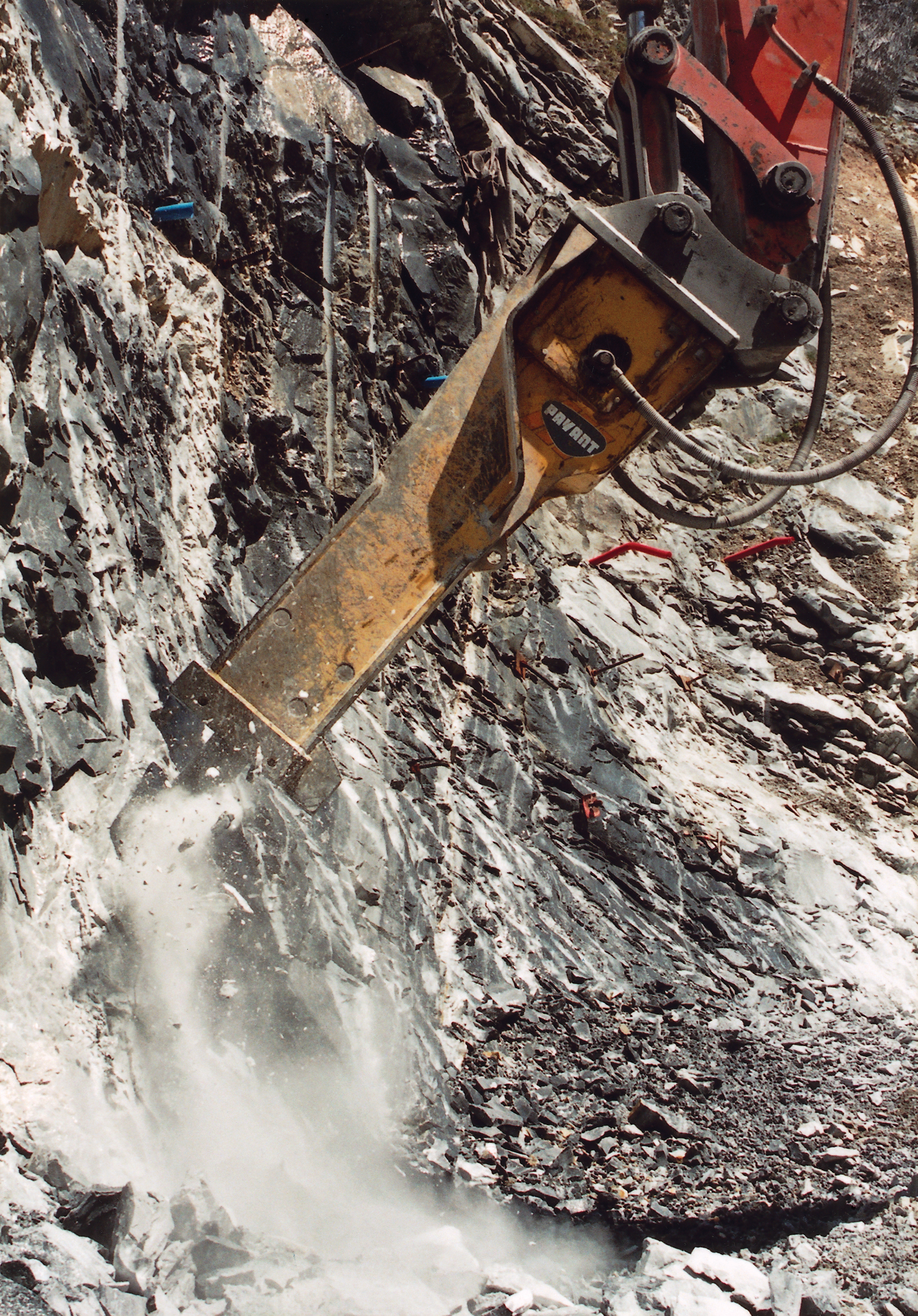
The latest breaker designs offer higher power to weight ratios than ever before as well as improved maintenance
With restrictions on drilling and blasting getting tighter, hydraulic breakers are increasingly being used for primary breaking in quarries around Europe. But despite this increase, the operating weight of the latest models is not keeping pace.
Atlas Copco's new models are the 2tonne HB2000 for carriers in the 22 to 38tonne weight class, 3.1tonne HB3100 and 4.7tonne HB4700 for carriers in the 45 to 80 tonne category. The HB2000 offers 10% more power than its predecessor, the HB200; the HB3100 is 5% more powerful than its predecessor, and the HB4700 is 15% more powerful.
The two newest hydraulic breakers in Sandvik's range are for carriers in the 27 to 60tonne weight class. The 2.35tonne BR3288 and 3.38tonne BR4099 are aimed at the quarry and demolition market, according to the company.
"The focus for the future will not be ever bigger breakers - there is an investment issue with having carriers large enough to operate them for a start," said Atlas Copco marketing manager for hydraulic attachments Torsten Treger. "The aim for the future is to stay within the weight class but deliver more power. Current designs deliver around 20% more power than those from the 1980s."
"Nonetheless, demand for the large hammer is still there - the company has recently sold one into a uranium mine in Namibia."
Performance
Focus of the new designs is on systems to improve operation, reduce maintenance and best whole life costs.
The new Sandvik models feature a new operating principle that allows the BR3288 and BR4099 to be purpose-matched to individual applications and materials using a simple working mode selector located on the breaker.
A high-energy mode on the Sandvik breakers uses a lower blow frequency for optimum breaking power in hard materials, such as granite and reinforced concrete foundations; while a high-frequency mode delivers a higher blow rate and reduced impact energy to break softer materials, such as limestone. The Idle Blow Protector works regardless of working mode to provide greater levels of protection.
The designs have simplified, and more robust, hydraulics featuring fewer valves and greater back-pressure tolerance, making them the ideal match for a wide range of carriers and hydraulic flow rates.
Indeco has also added the ABF anti blank firing system to its range in a bid to prevent damage to the breakers from misuse on site.
Improving service life is an on-going target for Indeco. "We are actively working to increase the wear life of tools and the bushings," said Vitulano. "It is especially important for customers to offer assistance on this level and try to prolong the time between maintenance." Similarly all three new breakers from Atlas Copco are equipped with the PowerAdapt system, which shuts down the unit if oil pressure is too high. This is useful when breakers are used on different carrier units, when they can be hydraulically overloaded if the carrier's oil pressure is set too high. The system also eliminates the use of conventional pressure relief valves, which continuously drain oil into the tank and waste energy.
Performance not cost
"We concentrate on lifetime costs by developing a quality product," said Treger. "Too many quarry operators are looking to buy on cost and not on performance.
"The market has been flattened by Asian manufacturers who are mostly offering copies of breaker designs from the 1980s. When you go to exhibitions it may seem that there are hundreds of breaker manufacturers but really they are all brands.
More and more of these manufacturers are effectively reducing manufacturing costs but the after sales back up is often poor.
"The difference between modern designs and those from up to 30 years ago is quite significant. The average efficiency of a 1980s breaker was 40 to 50%, where as modern designs can achieve 60 to 80%. The materials have also improved - there have been considerable advances in steel, particularly with high alloy steel." Treger adds that there has been considerable investment in research and development in that time too. In the 1980s most of the components were external, whereas today's designs are slimmer and give the operator a better view.
Atlas Copco's development process that created power adapt has also focused on energy recovery and noise. "Noise levels have also reduced - there is no metal to metal contact in newer breakers, which minimises maintenance as well as sound levels, and the power cell is now isolated from the guide system," explained Treger.
Some of these developments will be vital in meeting European standards on outdoor noise and it is here where Treger believes the latest breakers will outperform copied designs. "We now need market surveillance to ensure we are competing on a level playing field."
Future development
While it is clear the next generation of breakers will not be competing on weight but will deliver more when it comes to power, the other changes are likely to come in how breakers are used on site.
The focus of Indeco's research and development is more on complimentary products. Most are aimed at the demolition and recycling market but Vitulano said that the company is developing a new range of boom mounted breakers for crushers for the European market. "These are popular in the US and we think the significant health and safety benefits means there could be a good market for them in European quarries," he said.
Rip it up
Despite being a manufacturer of hydraulic breakers, FRD claims to have bettered the hammer design with the introduction of the FRD Xcentric Ripper. Designed for rock breaking and demolition work, the Xcentric Ripper is attached to an excavator boom the same as a conventional breaker.
The attachment, designed in cooperation with Spanish engineering firm Grado Cero, uses a patented reaction power accumulation technology and is claimed to be more productive than a breaker for 85% of applications. FRD claims that the Ripper can be up to 50% more productive than a similar dimension hammer, yet is considerably quieter in operation. The Ripper also creates far less vibration than a breaker, cutting damage to the carrier excavator.
FRD said that thanks to a closed energy chamber the Ripper can be used in all conditions, even under water, without any special preparation. The Xccentric Ripper range will eventually include 10 sizes for excavators from 2-85tonnes in operating weight. However Bauma will see the introduction of the first three models in the line-up, the XR6 GO for 7-10tonnes models, the XR25 GO for 19-25tonnes machines and the XR35 Go for 30-39tonnes carriers.

